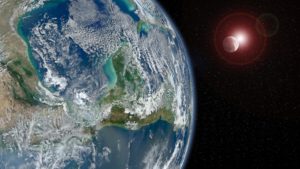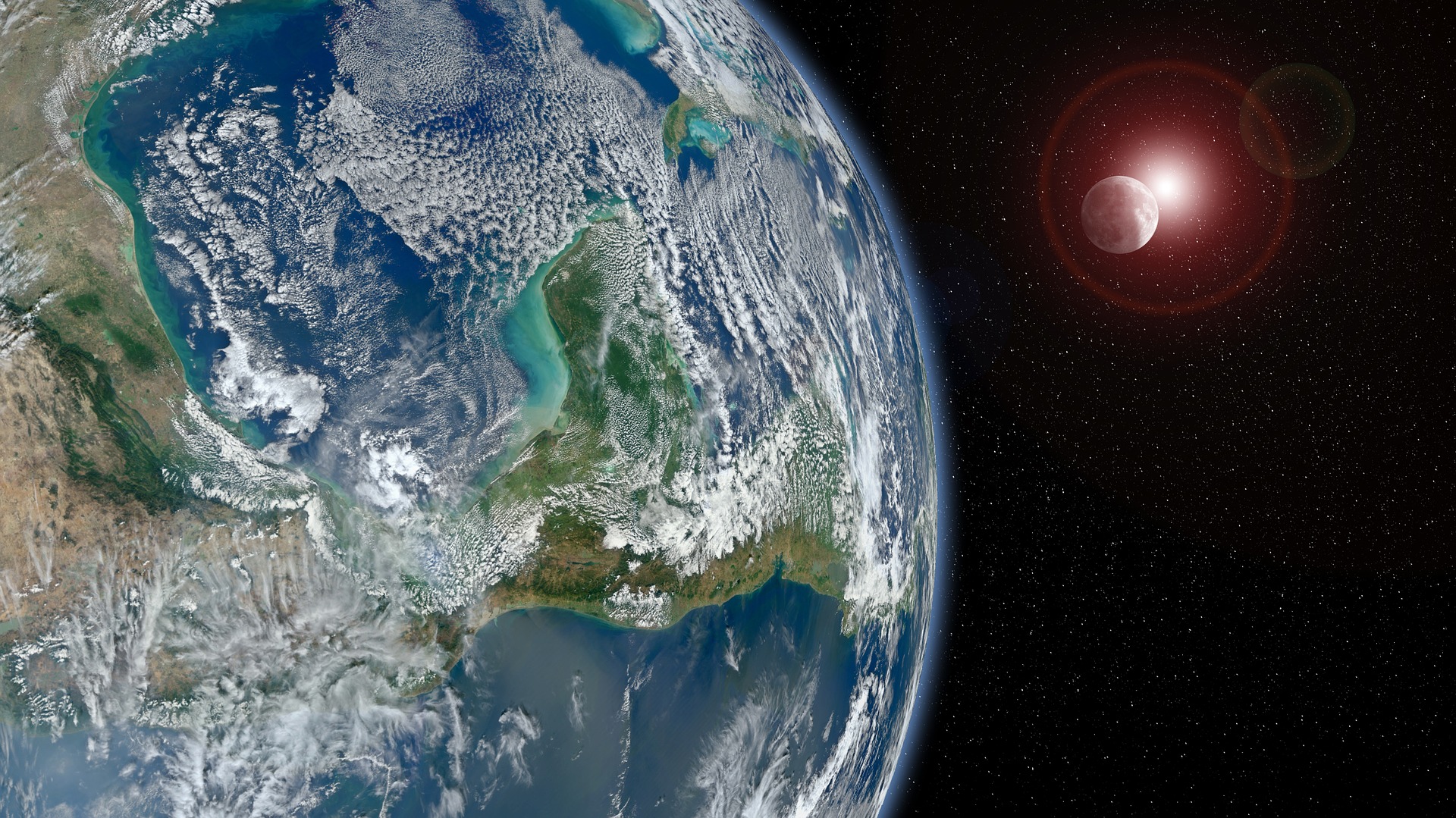 As we conclude our mini-series on the Genesis accounts of creation and the fall, I would like to ponder God’s magnificent work. We are not here by accident; God has carefully arranged things so that we can exist and flourish. In this regard, I have written a good bit over the years about what is known as the “Rare Earth Hypothesis.” Let’s review some of the basics of this hypothesis.
As we conclude our mini-series on the Genesis accounts of creation and the fall, I would like to ponder God’s magnificent work. We are not here by accident; God has carefully arranged things so that we can exist and flourish. In this regard, I have written a good bit over the years about what is known as the “Rare Earth Hypothesis.” Let’s review some of the basics of this hypothesis.
While most people, including most scientists, believe that there may be billions of inhabitable planets capable of sustaining complex life, the Rare Earth Hypothesis suggests that such a large number is overstated.
This is because there are not just a few things that come together to support life here on Earth—there are many. Here are some:
- Earth is at just the right distance from the Sun so that water is warm enough to melt, but not so hot as to boil and steam away into space. Water is also able, in this habitable zone (the so-called “Goldilocks” region), to both evaporate and condense at lower levels in the atmosphere, thus permitting a more even distribution of water, and the cycle of water over dry land known as precipitation.
- For suns to spawn Earth-like planets they must have sufficient “metallicity,” which is necessary for the formation of terrestrials rather than gaseous planets.
- Earth is in a “habitable zone” within the galaxy as well. Closer to the center of galaxies, radiation and the presence of wandering planetoids make life there unlikely.
- Earth exists in a disk-shaped spiral galaxy (the Milky Way) rather than in an elliptical (spheroid) galaxy. Spiral galaxies are thought to be the only type capable of supporting life.
- Earth’s orbit around the sun is an almost perfect circle rather than the more common “eccentric” (elongated) ellipse. Steep elliptical orbits take a planet relatively close to and then relatively far from the sun, with great consequences for warmth and light. Earth’s stable, nearly circular orbit around the sun keeps our distance from it relatively constant, and hence the amount heat and light does not vary tremendously.
- Two nearby “gas giants” (Jupiter and Saturn) attract and catch many wandering asteroids and comets and generally keep them from hitting Earth. The asteroid belts also keep a lot of flying rock in a stable orbit and away from us.
- Our molten core creates a magnetic field that holds the Van Allen radiation belts in place. These belts protect Earth from the most harmful rays of the sun.
- Earth’s volcanism plays a role in generating our atmosphere and in cycling rich minerals widely.
- Our sun is just the right kind of star, putting out a fairly steady amount of energy. Other types of stars are more variable in their output and this variance can utterly destroy life or cause it to be unsustainable due to the extremes caused.
- Earth’s fairly rapid rotation reduces the daily variation in temperature. It also makes photosynthesis viable because there is enough sunlight all over the planet.
- Earth’s axis is tilted just enough relative to its orbital plane to allow seasonal variations that help complex life but not so tilted as to make those variations too extreme.
- Our moon also has a good effect by causing tides that are just strong enough to permit tidal zones (a great breeding ground for diverse life) but not so severe as to destroy life by extreme tides.
There are many more items on the list (see the first video below), but allow these to suffice. The conditions that come together on this planet such that it is capable of sustaining complex life are complicated, remarkable, and some argue rare in the universe. The ability to support life here is the balance of many fascinating things. We cannot but be amazed at the complexity of life and the intricacies required for it to flourish here. It would appear that for complex life to be sustained, many factors must come together in just the right way. The sheer number of these factors sharply decreases the number of possible Earth-like planets, despite the billions of galaxies and stars.
All this background information leads us to a blog at discovermagazine.com: Earth-is-a-1-in-700 quintillion kind of place. (700 quintillion is 7 followed by 20 zeros!) The blog references a study by Astrophysicist Erik Zackrisson from Uppsala University in Sweden.
Here are some excerpts:
Zackrisson’s work suggests an alternative to the commonly held assumption that planets similar to Earth must exist, based on the sheer number of planets out there …. Current estimates hold that there are some 100 billion galaxies in the universe containing about 10^18th stars, or a billion trillion …. Probability seems to dictate that Earth-twins are out there somewhere.
But according to Zackrisson … Earth’s existence presents a mild statistical anomaly in the multiplicity of planets …. Most of the worlds predicted … orbit stars with different compositions—an important factor in determining a planet’s characteristics. His research indicates that, from a purely statistical standpoint, Earth perhaps shouldn’t exist …. Researchers are confident in the broader implications of their model: Earth is more than your garden-variety planet.
I write on this topic more in wonder and awe than anything else. Our faith does not require that we believe ourselves alone in the universe. God can, and even might have, created intelligent beings on other planets, beings with whom He interacts and whom He loves.
Neither should we too quickly assume that Earth is not a rare jewel. Statistically, it would seem that we and Earth are rare jewels. Humble amazement at all that it takes to sustain life on our planet is a proper stance at this stage of the evidence. The more we learn, the more it seems that the convergence of all the factors we enjoy on Earth is rare rather than commonplace. Consider well all that God and nature—sustained by God—have done so that you and I can exist. Be amazed; be very amazed!
Cross-posted at the Catholic Standard: Rare Jewel: Earth-like Planets May Be Very Rare


In 1950, pope Pius XII published his encyclical, Humani generis (Of Humankind). Both Einsteinan cosmology and Darwinian evolution can be approved of, but it must be maintained that all of Humankind descends from our first parents, Adam and Hava. This dogma is referred to as monogenism. Its cosmological analogue is geocentrism. Indeed, our Earth is very, very, very special. The cosmological and geological time scales, with their billions of solar years of mathematical time, were six days, when seen with the eyes of the angels. The geological eras are often referred to as primary, secondary, tertiary, and quarternian. Hence, Einsteinian cosmology, before primary, is about the creation of the Universe, until the creation of the solar system: the first day. Then, geological primary consists of precambrium I, the creation of the Earth from fire, gasses, water, and dry continents: the second day. Then, precambrium II, with primitive bacteria that probably originated in clay minerals, and precambrium III, with primitive fungi, plants, and invertebrates: the third day. Geological secondary was the nine great eras of cambrium, ordovicium, silur, devon, carbon, permian, triassic, jurassic, cretaceous, and during these, advanced fungi, plants and vertebrate animals grew dependent on the Sun, the Moon, and possibly also the Stars: the fourth day. Then tertiary, with advanced fishes, birds, and mammals: the fifth and sixth day. Quarternian is the present era, with Humankind: the seventh day. The difference between Darwinian evolution and Christendom is not as regards natural history, but as regards theology. Only with Christendom can we grasp the relevant dogmas of geocentrism, monogenism, original grace, original sin, and eternal salvation. Natural history without Christendom still has original sin, but only Biblical creation does also have original grace and salvational history. Since our first parents, evolution continued with Homo habilis (Seth), Homo erectus (Enoch), and Homo sapiens (Noah). It is only through sacred scripture that we can learn of our spiritual heritage. The first eleven chapters of Genesis contain Abraham’s world view. Spirit cannot be excavated with a shovel. Let me suggest that the Universe is created in the image of Our Lady Mary, because it has given birth to Humankind, as she has given birth to Jesus. And every human being contains in itself billions of years of natural history.